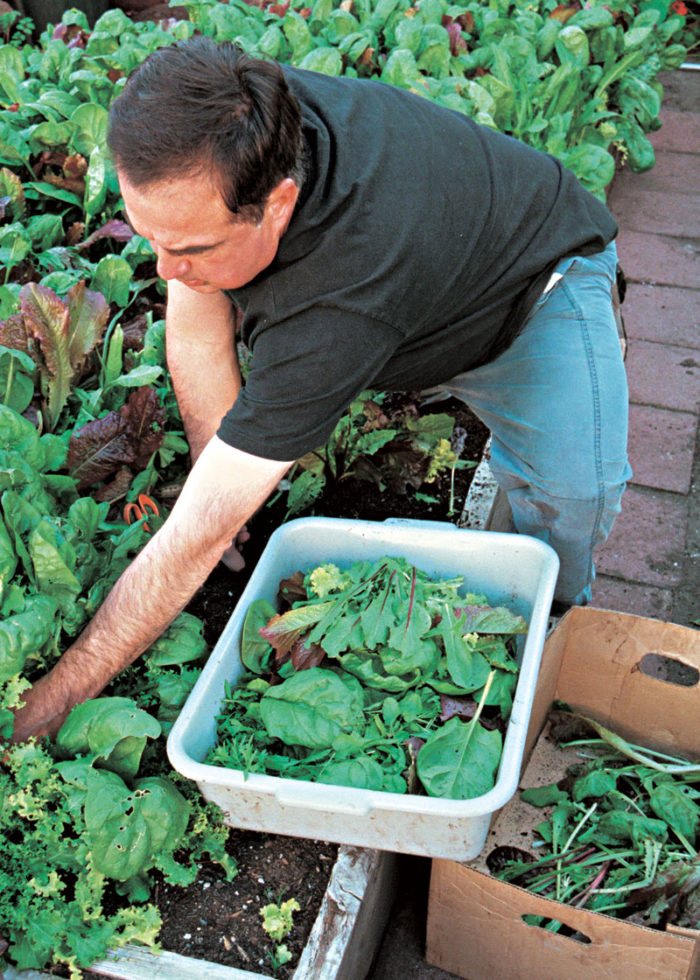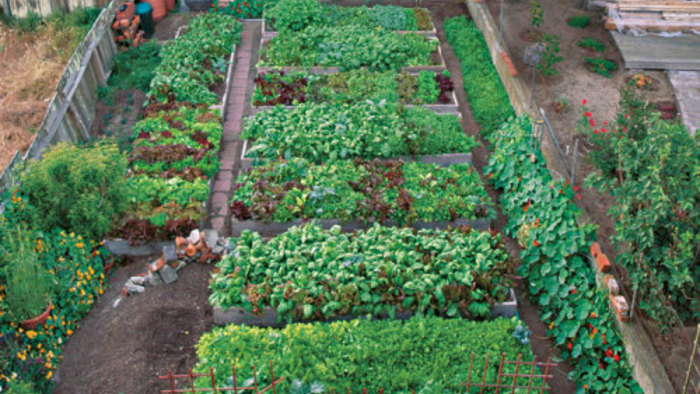
by George Gutekunst
December 1999
from issue #24
At one time or another, many home gardeners wonder what it would be like to sell some of their bounty, either from a roadside stand, at a farmers’ market, or to grocers or restaurants. It’s a noble idea, though not without its challenges.
I had no connections in the San Francisco restaurant world when I first planted my garden. A guy at the health food store who learned of what I was growing suggested I try a place called Ironwood Café, so I showed up with a bunch of greens, which I offered to the chef, gratis. She phoned the next day and said, “Bring it on!” One thing leads to another, and through the chef at Ironwood, I made contacts with a number of chefs around the city. In the seven years since, I’ve learned a few things about selling produce to restaurants.
Most restaurants are fairly large operations compared with a backyard garden, and they need big volume. Start with the little guys. Don’t be shy about paying the chef a visit and simply giving him or her something. Most will be more than delighted.
The best chefs to work with are those who have the European attitude of “bring in what you have as long as it’s good, and we’ll use it.” If there’s any hesitancy or discomfort on the part of the chef going into it, it’s not a relationship worth pursuing. It ought to be fun.
Most restaurant menus have a certain consistency, and chefs will expect a steady amount of something for a given length of time. Restaurants that rotate their menus on a one-week cycle are easier to work with than those that follow a two-week cycle. In any case, you must be accurate about how much of a given crop you’ll have and how often you can provide it.
A lot can go wrong. The restaurant business is a transient one, and it isn’t uncommon for a good customer to suddenly close up shop. A failing or unscrupulous restaurant will simply not pay its bills. Having an established network of other restaurants you can turn to is the remedy.
Chefs can be picky. I brought one guy mâche I thought was of lapidary precision, and he said the leaves were too big. (I stopped dealing with him.) A lot of chefs will call you on quality. You must be able to take that in stride; go somewhere else or reduce your price.
Aesthetics are a big factor for chefs. I wish more chefs would accept greens with big leaves, but they don’t. The way food looks on the plate matters, and you need to understand the plating considerations of each chef.
Some chefs will start buying your produce, then find a larger grower who can cut costs and offer better packaging and perhaps even better quality. I had been supplying one restaurant with Asian greens when suddenly a retiree with lots of money hired ten laborers and began growing just for fun. His product was superb; no way could I compete. So I moved on.
Shipping and handling can make or break your operation. Plan to deliver your produce no more than two hours after you harvest it. Package your produce in “vegetable grade” aerated plastic bags and refrigerate it immediately or store it in a cool, shaded area prior to delivery. And by all means, pick early, especially on a hot day.
Loyalty does mean a lot to some chefs. Keep those happy, and they’ll keep you in business. And since you can’t compete on volume, focus on unusual crops no one else is growing. One last thing: Be humble. You can make a profit if you have the quality and at least some volume, but the chefs will get all the credit for using your unusual ingredients; you will get little, if any. They’re the ones in the glamour business, after all.
Fine Gardening Recommended Products

A.M. Leonard Deluxe Soil Knife & Leather Sheath Combo
Fine Gardening receives a commission for items purchased through links on this site, including Amazon Associates and other affiliate advertising programs.

The New Organic Grower, 3rd Edition: A Master's Manual of Tools and Techniques for the Home and Market Gardener, 30th Anniversary Edition
Fine Gardening receives a commission for items purchased through links on this site, including Amazon Associates and other affiliate advertising programs.

Razor-Back Potato/Refuse Hook
Fine Gardening receives a commission for items purchased through links on this site, including Amazon Associates and other affiliate advertising programs.


















Comments
Log in or create an account to post a comment.
Sign up Log in